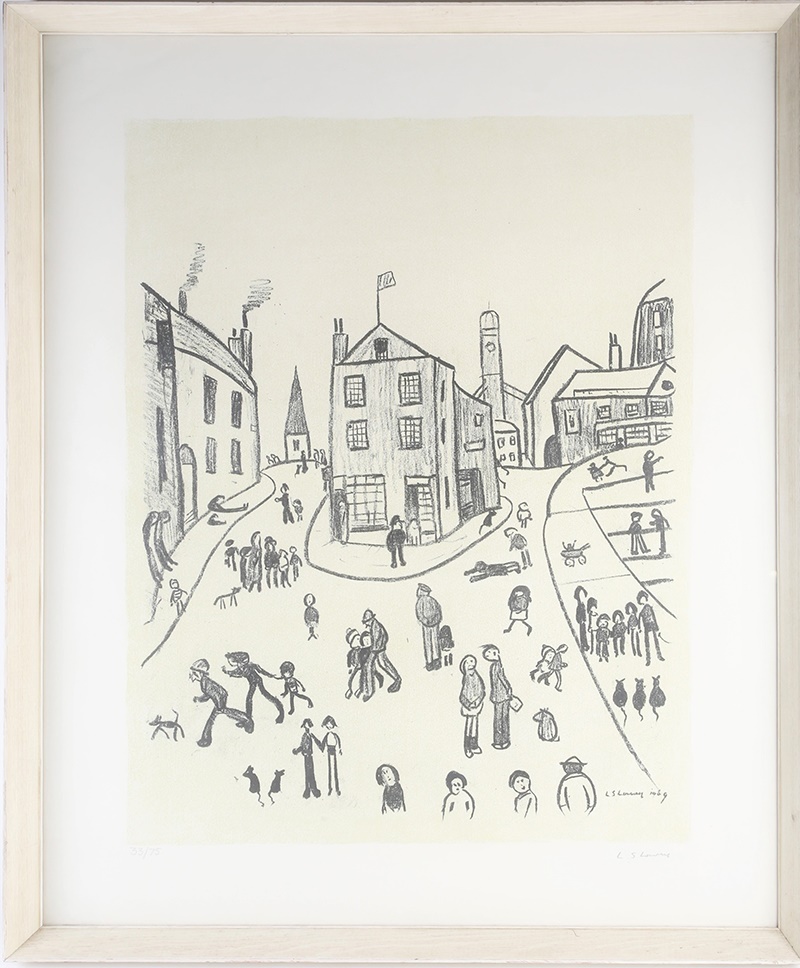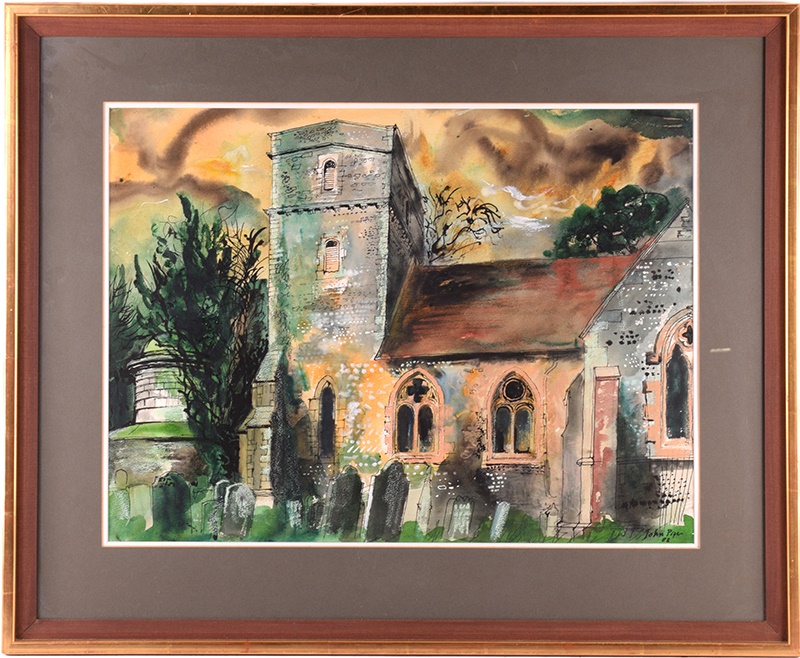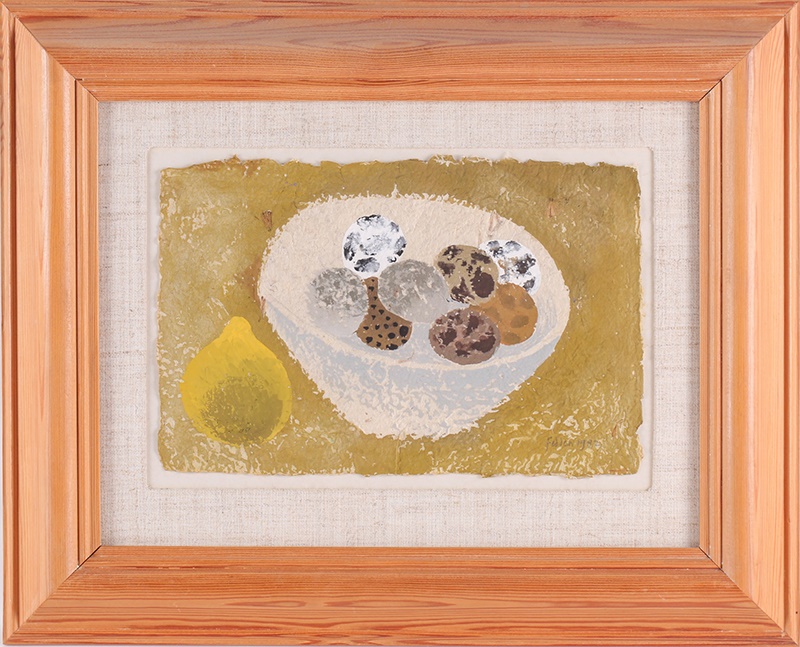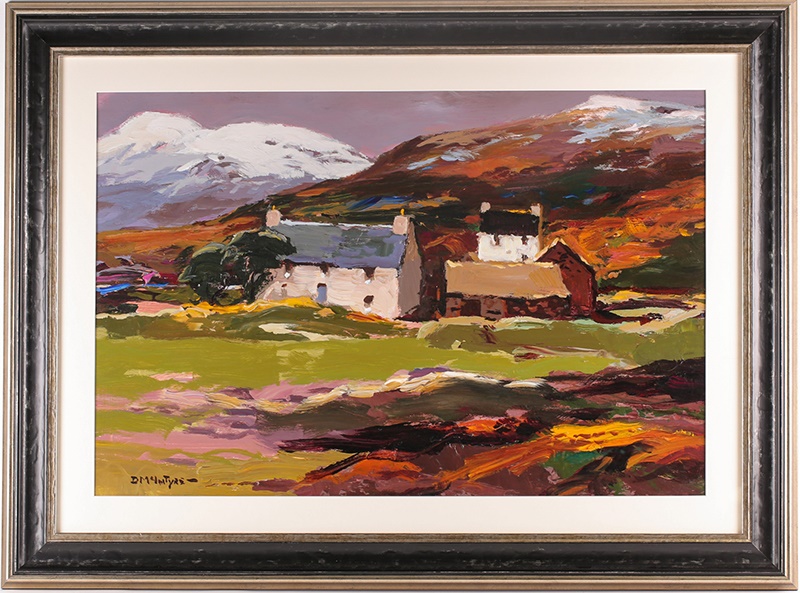British Art in the 20th Century
The notable artists who left an indelible mark on the art world
02/08/2023
The 20th century was a time of remarkable evolution in British art, unprecedented creative freedom of expression in art resulted in several notable artists leaving an indelible mark on the art world. Following the Aesthetic movement, which aimed at creating art for the sake of beauty rather than purpose or meaning, artists entering the 20th century were challenging the traditional norms of academic art which led to the evolution of some of the most important movements within the art world thus far.
The demand for British art from the 20th century has grown steadily over recent years, resulting in competitive bidding for works by renowned artists. From the iconic works of Laurence Stephen Lowry to the mesmerizing optical illusions of Bridget Riley, British art in the 20th century represents a diverse range of styles and movements. We have compiled a brief summary of the most popular artists of this era and what differentiates their works.
Laurence Stephen Lowry's distinctive industrial landscapes depicting working-class life have become synonymous with his name. His paintings capture the essence of urban existence during that era and continue to resonate with audiences today. Comparable in style, Helen Bradley was another influential figure in British 20th century art. Her charming narrative paintings portrayed scenes from her childhood memories, evoking a sense of nostalgia and innocence. Bradley's whimsical style and attention to detail captivated audiences, making her work highly sought after by collectors.
Laurence Stephen Lowry - The Three Cats, Alstow
John Piper's contributions spanned various mediums including painting, printmaking, stained glass design, and photography. His unique style often incorporated architectural elements and landscapes inspired by his travels across Britain.
John Piper St Mary the Virgin Church Fawley
Henri Le Fauconnier was a French-born artist who settled in Britain during the early 20th century. He played a significant role in introducing Cubism to British art circles. Le Fauconnier's innovative approach to composition and form challenged traditional artistic conventions, leaving an indelible mark on British modernism.
Sir Terry Frost was known for his vibrant abstract paintings characterised by bold shapes and vivid colours. His works exude energy and optimism inspired by the Cornish landscape.
Mary Fedden's still life paintings and landscapes are popular for their simplicity and use of vibrant colours. Her works often evoke a sense of tranquillity and capture the beauty in everyday objects.
Mary Fedden RA Eggs in bowl and lemon
Henry Moore, one of the most influential sculptors of the 20th century, revolutionised modern sculpture with his abstract bronzes which can viewed in public spaces and galleries around the world.
Peter Blake gained fame as one of the leading figures in British pop art. He is best known for co-creating the iconic album cover for The Beatles' "Sgt. Pepper's Lonely Hearts Club Band" among other notable works that blend popular culture references with artistic expression.
Eduardo Paolozzi is celebrated for his pioneering work in pop art and collage. His innovative approach combined elements from popular culture with traditional artistic techniques, resulting in thought-provoking compositions.
Bridget Riley's exploration of optical illusions and geometric patterns revolutionized abstract art. Her meticulous use of colour and form creates mesmerizing visual experiences that challenge perception.
Barbara Hepworth is widely regarded as one of Britain's most important sculptors of the 20th century. Her abstract sculptures often explored themes of nature and human form. With her distinctive style and innovative use of materials, Hepworth's works continue to captivate audiences worldwide.
Sandra Blow was another prominent figure in British art during this period. Known for her abstract expressionist paintings characterised by large scale, bold colours and dynamic compositions of discarded materials, Blow's work reflected her exploration of texture and form.
The Nash brothers - Paul Nash and John Nash - made significant contributions to British art through their distinct artistic styles. Paul Nash was known for his landscapes that captured the haunting beauty of war-torn landscapes during World War I. John Nash focused on capturing rural scenes with meticulous attention to detail.
Edward Bawden was celebrated for his graphic designs that encompassed various mediums such as illustration, printmaking, and watercolours. His unique style combined elements of modernism with traditional English aesthetics.
John Bratby emerged as a leading figure in the "kitchen sink" school of painting during the mid-20th century. His realistic depictions of everyday life challenged conventional artistic norms at the time and his use of colours distinguished him from his peers.
Stanley Spencer's works often depicted biblical scenes and everyday life in his hometown of Cookham. His distinctive style combined elements of realism and spirituality, creating a unique visual language.
Donald Hamilton Fraser was known for his vibrant and energetic abstract paintings. His use of thick bold colours applied with a palette knife captured the essence of many landscapes.
Elisabeth Frink is considered one of Britain’s best post war sculptors and figurative artists. She had the ability to transform subjects such as men, birds, and horses into thought provoking abstract subjects.
Anna Zinkeisen gained recognition for her portraiture and illustrations. Her detailed and elegant style captured the beauty and grace of her subjects, earning her commissions from prestigious clients such as the Royal Family.
Victor Pasmore and Julian Trevelyan were key figures in the development of British abstract art during this period. Pasmore's geometric abstractions challenged traditional notions of representation, while Trevelyan experimented with collage techniques to create dynamic compositions.
Julian Trevelyan Two Oxen and Cart
Kyffin Williams was a Welsh landscape painter whose distinctive style captured the rugged beauty of his native Wales. His expressive brushwork and use of rich colours brought life to his depictions of Welsh landscapes.
Mitch Griffiths is a self-taught contemporary British artist known for his bold and vibrant paintings that explore themes such as identity, consumerism, and popular culture. His works have garnered critical acclaim both in Britain and internationally.
Donald McIntyre was a prominent British artist known for his landscape paintings. His works often depicted the rugged beauty of the Welsh countryside, capturing its essence through bold brushstrokes and vibrant colours. McIntyre's ability to convey a sense of place and atmosphere made him highly regarded in the art community.
John Duncan Fergusson was a Scottish painter and sculptor associated with the Scottish Colourists, known for his bold use of colour and expressive brushwork.
These artists played significant roles in shaping British art during the 20th century, each contributing their unique perspectives and artistic visions. Their works continue to be celebrated today for their innovation, skilful execution, and lasting impact on the art world.
British art in the 20th century encompasses a diverse range of styles, themes, and mediums, the value of which are recognised not only for artistic merit but also as an investment opportunity. Indeed, Dawsons has achieved some impressive results for our clients when selling British artworks from the 20th Century at auction.
read more
Are Paintings a Good Investment?
How Can You Tell if a Painting is Rare?
The Scottish Artists You Should Know
Do you have any 20th Century British art that you are considering selling?
The expert team at Dawsons would be delighted to provide a complimentary auction valuation.
We screen all our auctions live to a huge global audience and will help you obtain the best price.
Please get in touch with our friendly team today: 0207 431 9447 / info@dawsonsauctions.co.uk




